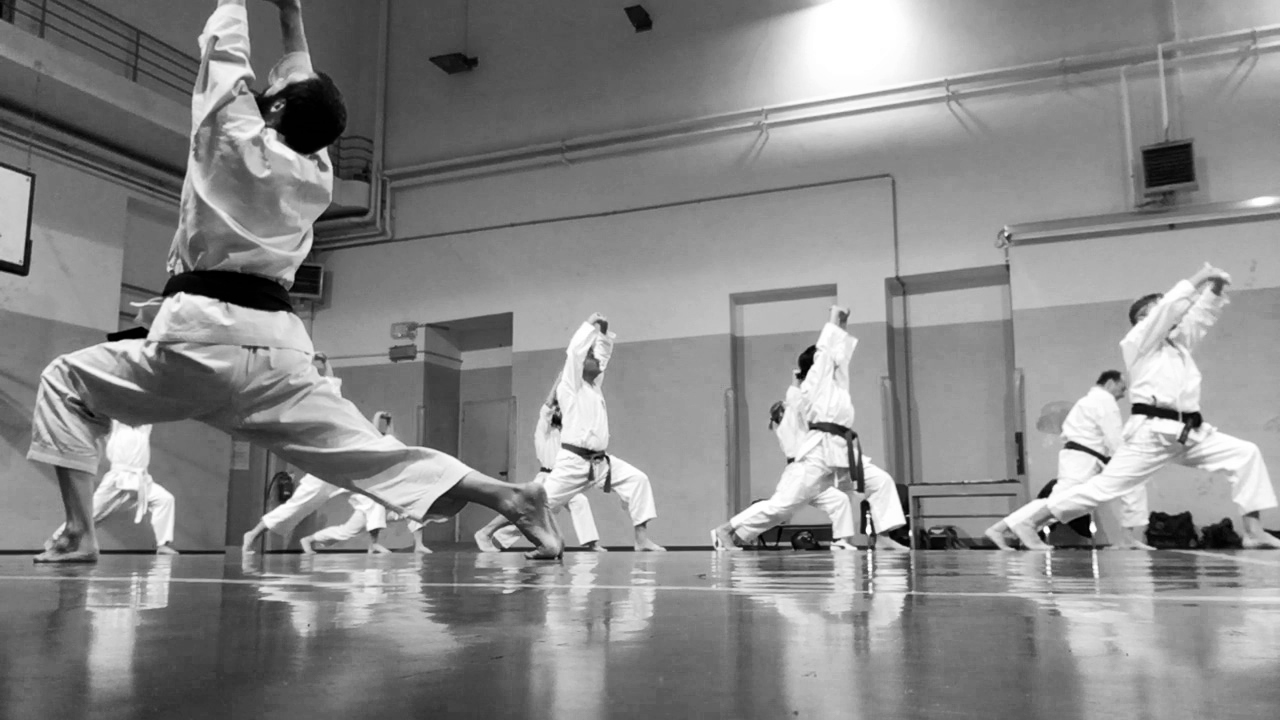体操
TAISō
“When breath moves with purpose, the body remembers its center and the mind returns to stillness.”
– Unknown –
TAISō
Taisō (from the Japanese 体, tai, meaning “body”, and 操, sō, meaning “tempering”, literally “tempering of the body”) is a Japanese term that refers to a set of physical or calisthenic exercises designed to activate the whole body, improve joint mobility, balance, and coordination.
These exercises are often rhythmic and repetitive, combining movement with breath in a meditative, energising flow. They can include rolling, swinging, stretching, and spinal exercises meant to awaken both mind and body— making them ideal for martial artists, but also highly beneficial for sedentary individuals or the elderly, especially in their gentler forms.
In Japan and China, this type of training is associated with the athletic preparation of martial arts practitioners. The term is also used more generally to indicate a particular form of gymnastics, independent of martial arts practice.

Gymnastic
This second meaning arises from the fact that Taisō, due to its blend of techniques, is an extremely scalable practice, capable of adapting to the preparation of competitive athletes as well as to musculoskeletal rehabilitation.
In Taisō, everything is movement. There is no movement without breath, and breathing — through the continuous intake and release of air — sets in motion the ki, the vital energy concentrated in the tanden (an internal point in the abdomen located three fingers below the navel) from which it then spreads throughout the body.
The “gentle” form (柔体操, Ju Taisō) consists of a series of exercises aimed at restoring and maintaining the body’s energy balance through techniques such as self-massage, stretching of the muscular-tendinous system, and joint mobilisation, accompanied by proper breathing and an intense, continuous awareness of one’s inner self. This practice is ideal for the elderly.
The “strong” form (剛体操, Go Taisō), on the other hand, allows the practitioner to strengthen (developing muscle strength), stretch yet reinforce tendons, increase lung capacity, improve cardiovascular efficiency, and develop concentration. This is suited to people that are looking for an alternative to yoga or pilates.
The exercises vary widely depending on the discipline to which they are applied, so there is no predetermined sequence of techniques to follow. Usually, it is up to the instructor to create a personalised exercise sequence based on experience and the intended purpose.
the twelve–exercise routine
Juni enshu no taisō
Drawing inspiration from the Chinese origins of Karate — those rooted in the Northern Shaolin (Shorin) style of China — Sensei Alberto Scarpellini developed a training routine with the aim of reintroducing the “internal” component characteristic of those methods into Karate.
This is achieved by introducing a system of exercises intended not only to warm up, stretch muscles, and mobilise joints, but above all to promote the individual’s well-being. It does so by applying core concepts of Chinese medicine such as the flow of qi (ch’i) and its circulation along the meridians.
This is a foundational aspect of martial arts that is too often overlooked. The goal was to create a set of exercises that can be used both as preparation for martial activity and as a path to psycho-physical well-being.
The set of exercises is a form of Go Taisō, a combined system of warm-up, stretching, and muscle strengthening, using both static and dynamic stretching. It engages multiple muscular chains for a sufficient amount of time to significantly activate the cardio-respiratory system.
These same exercises are also designed to be practised at a gentler pace by non-martial artists as a form of exercise aimed at improving overall psycho-physical well-being.
Three core elements
The twelve-exercise routine is based on the study of three core elements:
- Common Qi Gong practices such as Baduan Jin, Yi Jin Jing, Wu Xing, and Tai Chi Chuan;
- Breathing techniques;
- Both static and dynamic stretching.
The study and practice of Qi Gong methods were essential to understand the connections between movements, organs, and meridians, with the aim of constructing each of the twelve forms to specifically target certain parts of the body.
This combination of particular movements not only improves joint mobility, muscle tone, and flexibility but also stimulates the motility of internal organs, promoting their health through self-massage and the rebalancing of qi within the meridians.
Breathing — the foundation of life itself — is another vital practice, not only in martial arts but especially in Qi Gong, where it is often the key to mobilising the qi. Furthermore, abdominal breathing, by raising and lowering the diaphragm, acts as a massage for the abdominal organs in itself.
Finally, muscle stretching — an essential component of any martial art — plays a crucial role in muscle health, as it drastically reduces the risk of injury and prevents poor postural habits that, over time, may negatively impact an individual’s quality of life.
猫武会
discover more
Contact Us
CLASSES
KARATE
Tuesday 5:30pm – 7:00pm
Thursday 7:00pm – 8:30pm
TAISŌ
Tuesday | 7:30pm – 8:30pm
Thursday | 5:30pm – 6:30pm
Where we are
Garsington Village Hall
Wheatley Road, Garsington
OX44, Oxford
Horspath Hub
The Old Chapel, Horspath
OX33 1RP, Oxford
